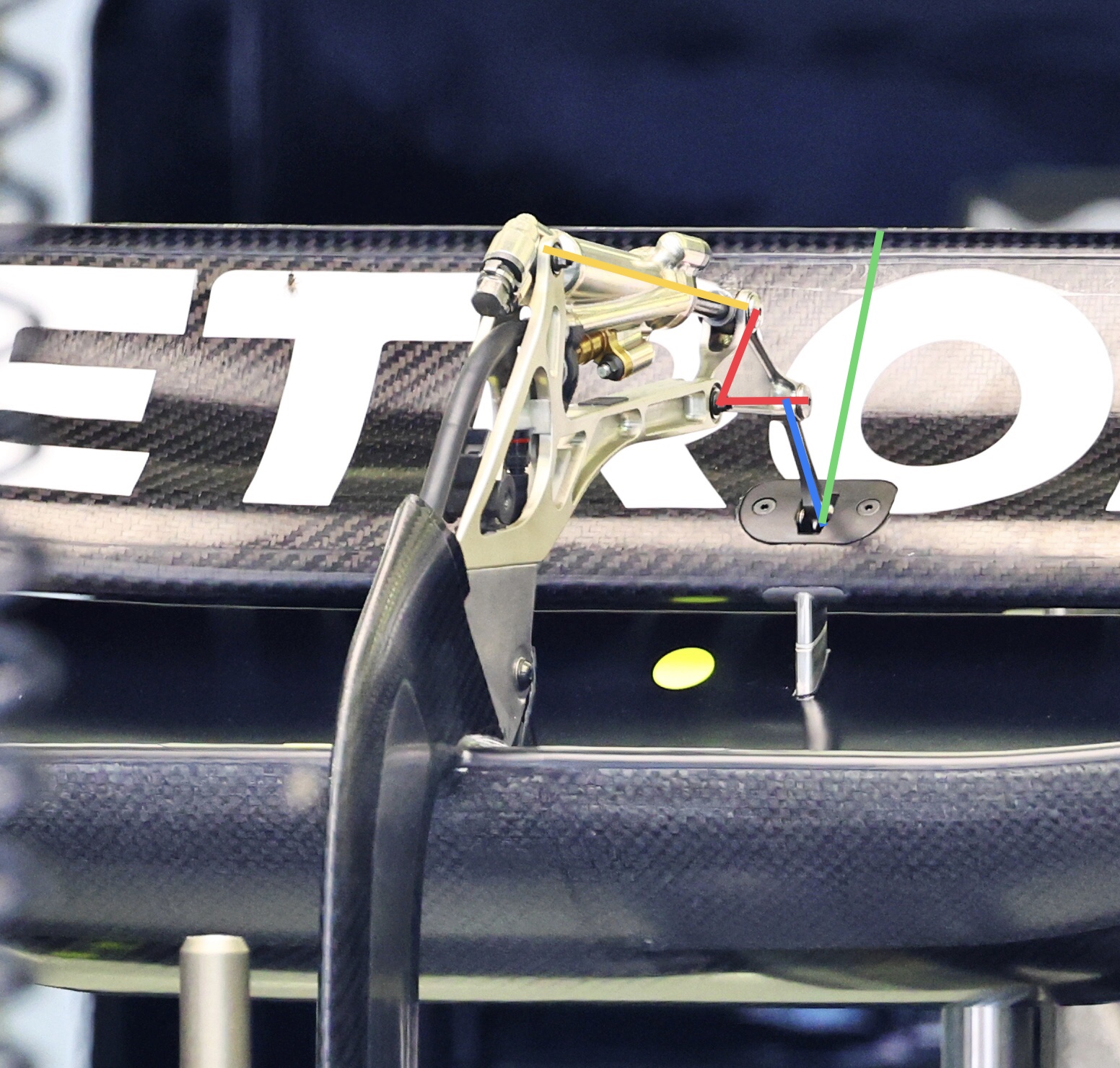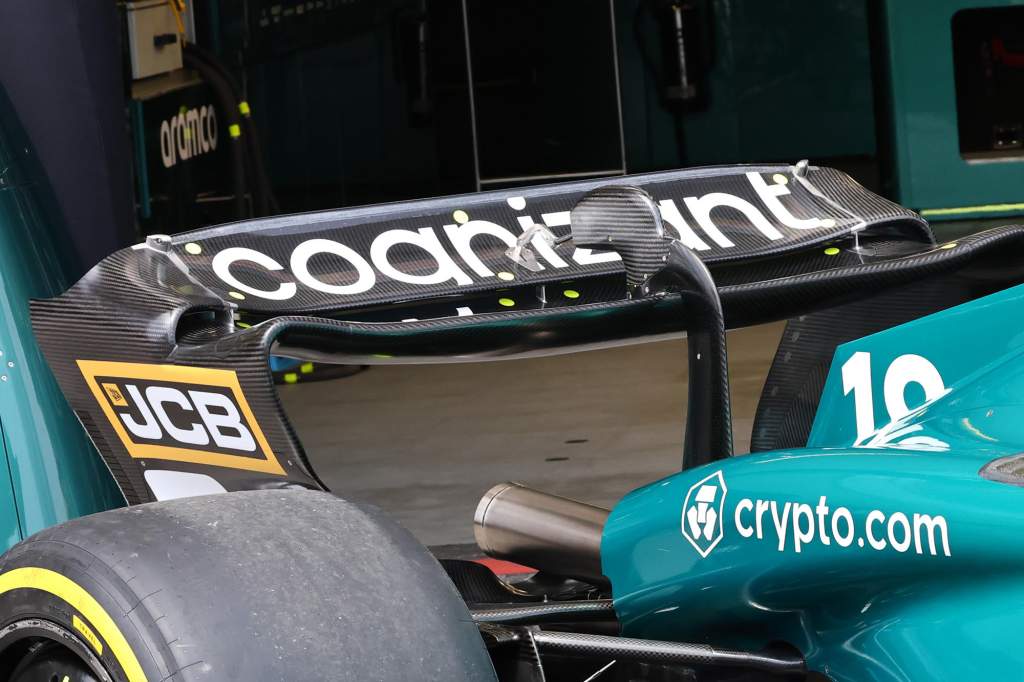Up Next

Aston Martin’s DRS troubles during the Azerbaijan Grand Prix weekend are a reminder that the system is not simply a case of pressing a button and the rear wing flap opening.
It’s a more complex design challenge than that, one that caught Aston Martin out when it introduced a new low-drag rear wing.

The team indicated it was primarily an aerodynamic problem. A combination of the high speeds on the main straight and vibrations from the wing and the bumps contributed to the flap not opening consistently in qualifying on the Friday and the Saturday.
If it hadn’t worked in both DRS zones it could very easily have cost Aston three tenths on a qualifying lap so with the level of competition at the front that could be two or three grid positions.
The problem was intermittent, although it was solved once into the sprint race on Saturday, then for Sunday’s grand prix.

So how is it possible to get something as simple as the DRS wrong? Well, the problem is that it’s far from simple.
The speeds involved, the positioning on the DRS zones, the loads at those speeds, the geometry of the rear wing and the DRS actuator, which we can see in the picture above, all play a part.

So let’s take a closer look at that DRS actuator and the geometry of the mechanical mechanism. We can see that the cranked arm is to clear the top surface and leading edge of the flap, it is highlighted with a thick magenta line when closed and with the thinner magenta line showing the position when the DRS is opened. The green line shows the flap surface when closed (thick line) and open (thin line).
The actuator force that is required to open the DRS is applied along the thick red arrowed line, and transferred to the flap through the cranked arm, the intersection of this actuator with the top pivot (hidden) and the flap pivot (inside flap profile) shows that to get it open the flap is being pulled forward and upward.
When the DRS is open, it is applied as shown by the thin red line. The force required to keep it open is nothing compared to what it takes to open it.

By comparison, this is the Mercedes version. The main thing we can see from it is that Mercedes has used a bell crank (red lines) and is lifting the flap to open the DRS, as opposed to the Aston version that is trying to pull it forward and upward at the same time.
Also, the distance from the trailing edge (green line) to the link (blue line) from the bell crank is longer. This all reduces the force the actuator needs to generate to open a DRS flap that has the same aerodynamic load.
Yes, it’s all a bit more complicated, expensive and probably heavier but in this case function over form takes precedence.
What seems most likely is that Aston Martin got its analysis wrong when it came to calculating the force needed from the actuator given the geometry of the pivot when the top flap of the rear wing is pulled forward and upward to open the slot gap.
It’s critical to get this right to ensure you have the right load in the actuator to overcome the downforce and drag generated by the flap itself.
There’s no way to test this in the garage as it’s impossible to generate the load other than by driving the car at whatever speed the problem occurs at. Given that the speeds in Baku when the car crossed the DRS activation line in qualifying were over 310km/h on a fast lap, that can be a huge amount of load. In practice it would have been a little bit less and in the race quite a bit less.
It’s important to remember that downforce increases with the square of the speed, rather than being linear. So that means there is a great sensitivity to the speed when the DRS is activated. In Baku, the main DRS zone where Aston had troubles was shortened by 100 metres, meaning the car will have been traveling faster than originally expected when the driver would press the button to activate the DRS.

As the problem was intermittent and difficult to pin down, it’s likely that the Aston Martin was right on the edge with the designed actuator force.
There are things you can do to minimise other potential DRS problems and teams will trim the opening by fitting small spacers of 1-3mm into the actuator to ensure the flap never goes past its aerodynamic centre and a small positive load is retained on the flap to make sure the DRS doesn’t flutter when open and snaps shut when you want to close the DRS.
But to get it to open initially you need sufficient power in the DRS actuator to overcome the downforce in the first place. And if the load was right on the edge of what it could cope with, that would explain why sometimes the DRS worked and sometimes it didn’t.
The team reckoned it cost perhaps a tenth and a half in terms of qualifying pace given the DRS was working in the other zone. The team will have been working hard back at base to try and understand the problem and fix it within what was possible under the parc ferme rules, but it also seems it was less of a problem when running in traffic and in the race conditions, which are always just that little bit slower.
It might require a small revision to the actuator to avoid the problem for the next time this rear wing version appears at a low-downforce track. Fortunately, Aston Martin recovered well with Fernando Alonso and Lance Stroll taking fourth and seventh in the grand prix in Baku.
But the problems it had and the detail that goes into these designs are a reminder that, on a Formula 1 car, even seemingly the most simple system has unseen complexity.






